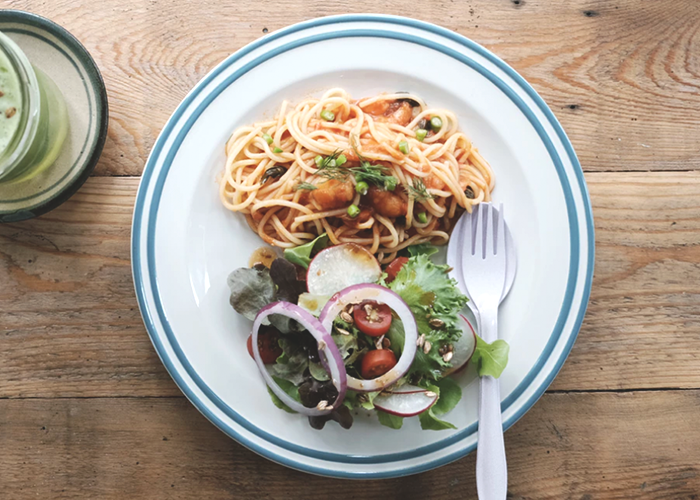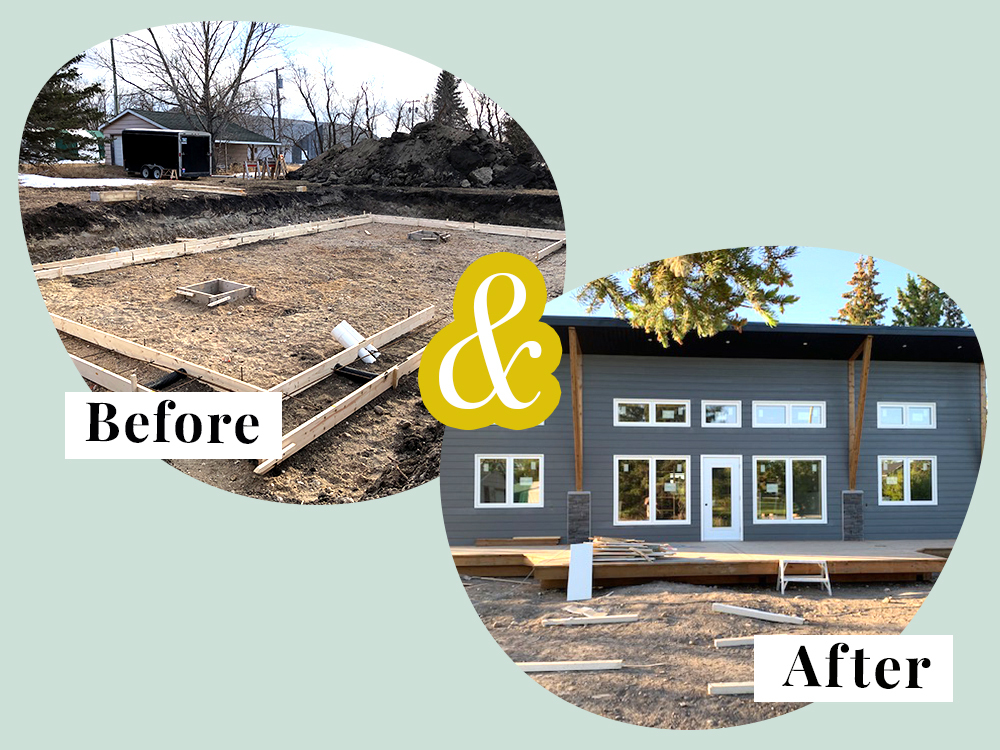A 6-Step Guide To Meal Prep To Save Money (& Do Fewer Dishes)

I’m not the world’s greatest cook. It’s not that I make bad food (albeit my dishes are not always a home-run) — I just hate cooking. When I get home from work, the last thing I want to do is pull out a cutting board and prepare a healthy meal. But cooking at home is essential if you don’t want to drain your bank account on food.
So I started meal planning and shopping at Aldi to save money, reduce my food waste, and get better at cooking. But to my dismay, that still didn’t motivate me to wait over a hot stove while hangry.
What really gets me cooking at home? Meal prepping.
Once I started slicing, dicing, and seasoning my ingredients before the week began, it got easier to cook them during the week. All I have to do now is dump a Tupperware into a skillet or a bag from the freezer into my slow-cooker. It’s much less intimidating, not to mention quicker.
But it does take some pre-planning. Luckily for me, I love planning about as much as I hate cooking. I’ve got it pretty much down to a science, and while I’m not perfect (hey, sometimes Sundays are for napping), I notice a big improvement in my budget and what I eat when I meal prep. And that’s enough motivation for me to help others do it, too.
Here are my best tips to get started with meal prepping so you can be the home chef you’ve always dreamed you could be.
1. Schedule it
That which does not get planned does not get done. At least that’s my motto. Meal prepping isn’t as fun as a spontaneous hangout with friends, so it needs to be scheduled.
I suggest banging out planning, shopping, and prepping, all at once. You’ll save time doing it all at once vs. coming back to it and trying to remember why you got these ingredients in the first place. For the whole endeavor, you’ll need around four hours. When I shop at Aldi, it takes me 30 minutes to shop and with the limited selection, I can plan a menu in 30 minutes. Meal prep then takes about three hours. It seems like a lot, but you’ll get that time and more back throughout the week.
2. Inventory
Take inventory of your fridge before you plan your meals. Using the items you already have first will cut your food waste and save lots of money. It may not be desirable to eat carrots in every meal all week (we’ll get to that solution later), but if your goal is to cut your grocery budget, it’s a burden you might need to endure.
3. Meal Plan
My favorite thing to do is browse Pinterest for recipes. I have a Meal Planning board where I keep all my recipes saved. If you’re just starting out it might be a good idea to have a “New Recipes” board and a “Favorites” board.
There are many ways to meal plan, but I like to look at what I have, what’s on sale, and my saved recipes to come up with my menu for the week. I find a lot of recipes by searching for ones using ingredients I have or that are on sale like “ingredient recipes.”
4. What to Have
Once you have your plan and shopping list make sure you have the right tools for the job. The most important things to have are:
- Gallon and Quart-Sized Plastic Bags
- Glass Containers
- Plastic Containers
- Cutting Board
- Parchment Paper
- Rimmed Baking Trays
5. Shop With Purpose
When you enter the store, you’re going in there with a purpose. Find your list items and get out of there. The more time you spend at the grocery store, the more time you have to convince yourself that you need everything in it. (This is especially true of me in Trader Joe’s.)
You are a soldier on a mission, so be prepared. Eat a snack before you go, go for the store brands, and avoid aisles that don’t have anything on your list. You don’t need to check it “just in case.”
6. How to Meal Prep
Now that you’re home with your grocery haul, it’s time to do the deed. Here are the steps I use to get all my recipe ingredients prepped for easy assembly throughout the week:
- Sort Ingredients by Recipe. By having everything out for a recipe, you can determine what size container you’ll need for it and easily switch from one recipe to the next.
- Chop What You Can. Most veggies can be pre-chopped. I avoid apples and avocados, but you can always use a little lemon juice to keep them fresh.
- Store What You Can Where You Can. The containers you use to store your ingredients can also be used to store leftovers, so keep future hot foods in glass containers and sauce or salad ingredients in plastic. That’s fewer dishes for the win!
- If in Doubt, Freeze it. I don’t typically get uncomfortable prepping for six days at a time, but some people feel you shouldn’t do more than three. If that’s you, then you can still prep for six days ahead just pop it in the freezer instead of the fridge. I would then plan on slow cooker meals for those because most oven meals don’t freeze well and take over 24 hours to defrost (mine are still frozen after 24.)
Tips for freezing food:
- Cut sticky produce like bananas and mangoes and line them on parchment on rimmed baking trays to freeze overnight and then bag.
- Gallon and Quart sized freezer bags are best for freezer meals because you can label them with a sharpie and cut them to easily remove the contents. Otherwise, you’ll need to get freezer tape for containers so the tape stays on.
- Seal freezer bags most of the way and use a straw to suck out remaining air. This is highly advised for long-term storage (up to six months is safe to retain flavor.)
- If you buy an ingredient for a recipe and you don’t use it all, then you might consider freezing it. Just make sure it’ll defrost well for whatever you’ll want to use it in later. This solves the problem of eating carrots at every meal for a week.
If You’re Still Hesitant
Here’s Greatist’s list of 19 foods that keep well and how to prep them. Start with these foods, and you’ll see how easy it is to prep for a week at a time.
If you’re an overachiever, or really short on time during the week, you can cook everything instead of just prepping it and eat the leftovers all week. Here’s a list of 17 meals that make great leftovers. Start there in your home chef journey, and eventually, you might learn you have more time to cook than you thought!
Jen writes about her and her husband’s journey to pay off $86,000 of debt in less than 2 years on her website, Saving with Spunk. Follow her on Twitter here!
Image via Unsplash




